What if instead of a rocket you put a drone in the pipe?
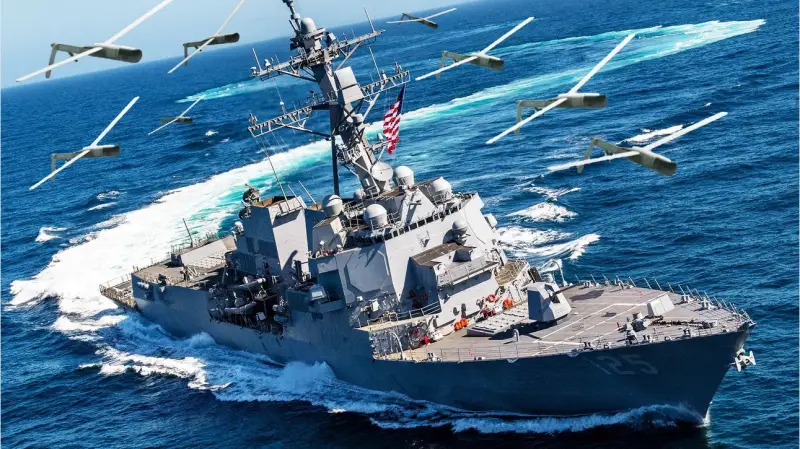
Attacks drones on warships have recently appeared frequently in the news, ushering in what may be a new era of naval warfare that even the world's most powerful navies do not seem prepared to fully confront on a large scale. At least, the NATO fleet is clearly (in the next article the other day!) losing to the Houthis, and in full.
In and around the Red Sea, the Houthis' constant air attacks by drones on ships, including surface combatants of the United States and its allies, cannot but be considered successful. At least several ships from different countries have already “gone home” because they cannot continue to serve. But more on that later.
But also in the Black Sea, we have witnessed the successful use of BEC - unmanned boats, relatively inexpensive unmanned systems, the use of which in a maritime context is usually viewed through the prism of their threat to warships. And they showed that they can create these very problems for very real warships.
It was funny, many called the BEC “torpedoes for beggars,” but that’s actually what happened: yes, this “torpedo” does not require a submarine, and everything is much simpler and cheaper. And the damage... well, no worse.
But the potential to use lower-class drones for the same warships, both defensively and offensively, is perhaps just as important.
While the understanding of what is happening in the Black and Red Seas is just beginning, how the whole concept of using modern weapons, and it changes simply catastrophically quickly and just as dramatically.
However, those who have already experienced BEC and UAV attacks are already beginning to think about the need to develop strategies and tactics to counter new adversaries. Various options are already being considered in a number of countries, but not everything is as simple as the developers would like.
If we talk about ships, they (with the exception of aircraft carriers) are not made of rubber. With very limited additional space and no current way to reload Vertical Launch System (VLS) cells at sea on American ships, the weapon mix and ammunition size aboard America's surface combatants, both present and future, are being greatly re-evaluated already. Today.
And here everything is very reasonable: having already received several times from the Houthis, the Americans were the first to rush into development, because everything is transparent here: we need to protect our ships, and no one minds making extra money by retrofitting them.
This, you know, is not to order machine guns to be installed on all ships, this is a different approach.
Here it is clear that theoretically it would be nice to add more very expensive, complex and highly effective missiles, the question is - will this be beneficial? Another possible development of events is when, instead of large and medium-sized missiles, the launch tubes will be filled with much smaller and cheaper aerial drones, such drones-interceptors for other drones or, what a monk jokes, BEC. This is much more feasible and could greatly enhance the combat capabilities of a modern warship.

Removing a spent cassette from the destroyer's vertical launch system aboard the destroyer Benfold. And behind the UVP there is a very important system, which will be discussed below
One could even argue that, at the very least, arming surface ships with drone clusters has become as relevant as stuffing more missiles into launchers. What is meant here is to enable surface combatants to quickly launch anything from a single drone to swarms of inexpensive but effective drones that can fly a fair distance or stay aloft for hours. This hides a very significant difference with missiles, which, excuse me, are really disposable: no one will return them back. But the drone can be returned and reused.
Yes, numerous recent events have given planners in many countries, including the US Navy, a lot to think about. The war in Ukraine, and especially the use of unmanned surface ships in this conflict, as well as the potential looming battle in the vast Pacific with China, which is constantly discussed in the United States, are just two reasons to think about it. And there are much more of them.
Well, the ongoing crisis off the coast of Yemen, during which commercial and military ships have been repeatedly attacked using drones and cruise missiles, and anti-ship ballistic missiles were used for the first time, is perhaps of the greatest interest.
This is a much more geographically compact threat than the one the US Navy all plans to face in the Pacific against China. As of mid-February, US surface combatants had fired more than 100 Standard missiles (SM-2 and SM-6) and likely other types in excess of that number against Houthi weapons. Now this number is noticeably higher, because the war, which is not really a war, continues. And here financial and logistical difficulties arise, because replenishment of these weapons becomes a certain problem.
Both far and expensive!
And inexpensive, single-use attack drones are several times cheaper than anti-ship missiles, but can still pose a serious danger to ships. Not only can these UAVs be able to hit ships, but on top of that, they can also take on the precious interceptor missiles fired from these ships for defense. And here is a case where the prices of the target and the interceptor are simply incomparable.
On the other hand, let's put it this way: if a US Navy ship wants to hit a small target at a long distance, its only option currently is to launch the BGM-109 Tomahawk or SM-6 cruise missile, which is optional on some ships fleet USA. But, in fact, the Ax is the only long-range weapon.
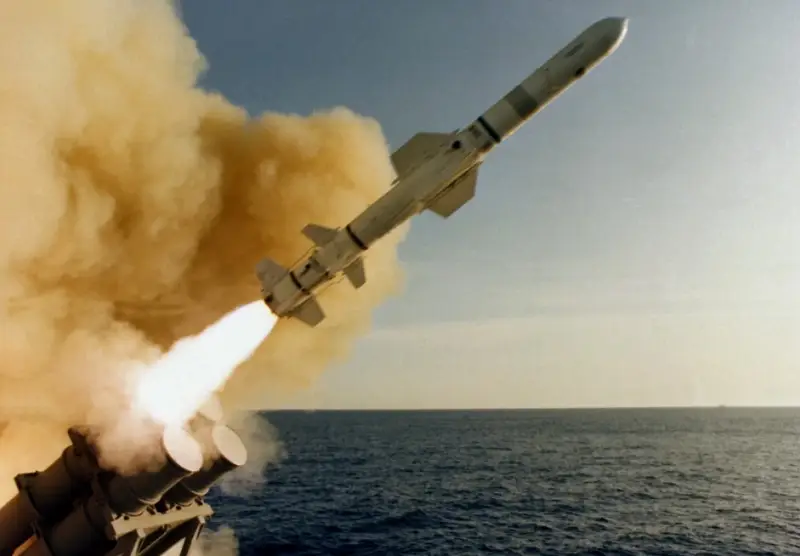
The Ax is not a cheap weapon, starting from a million dollars apiece, in addition, although some Tomahawk variants can pursue and hit naval targets, along with the RGM-84 Harpoon, which, it is worth noting, has a very limited range. Adding long-range loitering strike munitions to any ship's arsenal can completely change the balance of power.

In general, a lot has already been said about the use of UAVs in the armament complex of a warship: this includes reconnaissance, search and rescue operations, and work as communications or radar image repeaters. That is, everything for which helicopters, which are very expensive per hour of work, are lifted into the sky. Here, there is practically the same set of tasks, only it costs less and does not expose the crews to risks.
This is especially useful in areas where a helicopter can easily get hit by a missile and stop performing its mission. On top of that, many drones can be in many places at the same time. There can only be one helicopter, and not every ship can carry and control several helicopters.
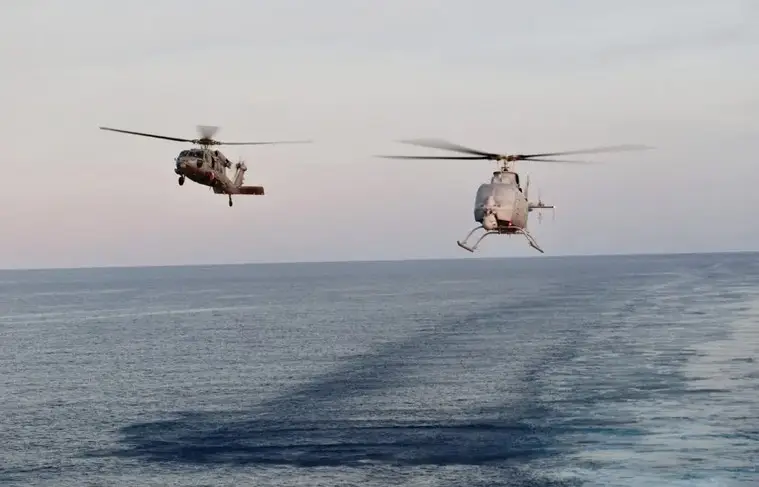 MQ-8C Fire Scout unmanned aerial vehicle and MH-60S Sea Hawk helicopter perform simultaneous flights
MQ-8C Fire Scout unmanned aerial vehicle and MH-60S Sea Hawk helicopter perform simultaneous flights Adding dozens of small, long-range drones to surface combatants could also greatly enhance their defensive, communications and electronics capabilities.
But, naturally, in this matter, as in any other, there are nuances. And we’ll talk about them now.
How to push in something that cannot be pushed in?
Surface combat ships are not cruise ships; every kilogram of displacement and cubic decimeter of space is worth its weight in gold. And no matter how hard you try, finding a place for a new weapon is very difficult.
If we take American ships, then the lack of space for new large weapons has already become the talk of the town. Vertical launch systems (VLS) are an extremely valuable asset aboard the U.S. Navy's Arleigh Burke-class destroyers and Ticonderoga-class cruisers, as well as the Zumwalt-class destroyers and future Constellation-class frigates. But inventing a place for something else is almost impossible.
Moreover, adding more large weapons in the form of additional traditional VLS cells to the existing US surface combat fleet does not seem feasible either. And the practice of NATO ships in the Red Sea has already shown that there simply cannot be too many anti-aircraft missiles. There weren't even enough of them there.
There is an option for reinforcement in the form of installing box-shaped launchers on the deck, but they take up a lot of space and add weight, operating with a fairly small number of additional missiles. The game, as they say, is not worth the candle.
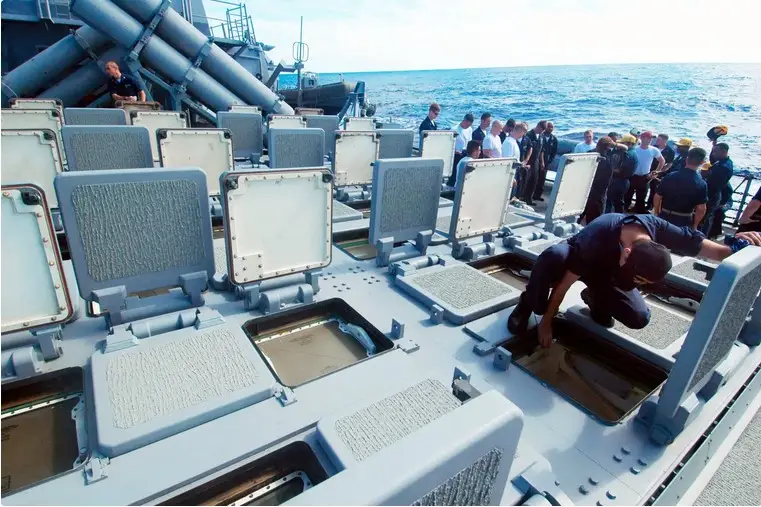
Checking the MK 41 vertical launch system
But the same cannot be said about disposable and, especially, reusable drones with a range of hundreds of kilometers or so. Drones capable of long-term patrolling in a certain area are a reality today and many of them easily use a common launch tube (CLT) or similar system that can be installed on almost anything - from buggies to helicopters and strategic drones.
So, is the vertical launch pipe our (and not our) everything? Yes, these tubes can launch different types of unmanned aerial vehicles, equipped for different missions - some carrying a warhead, some carrying an electro-optical payload, others carrying electronic warfare, electronic surveillance or communications relay systems.
Unmanned aerial vehicles with these different configurations can be tightly packed together in VLS salvo packages. The packages can be made armored, which makes it easier to place them almost anywhere on the deck where there is free space, of any size and shape.

The Altius drone was launched from a buggy-mounted CLT at full speed
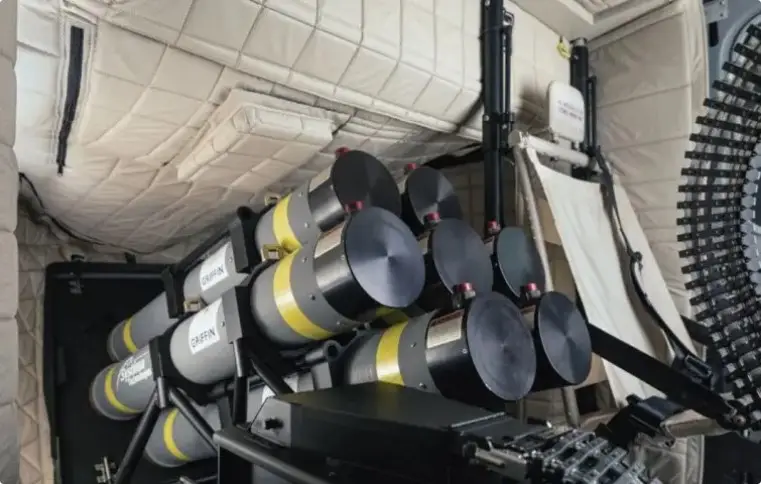
Launch tubes inside a helicopter

CLT array on board the MC-130J
This means that a US or any other destroyer can quickly be equipped with dozens of drones capable of carrying out multiple missions, without refitting or huge costs. These additions can be placed wherever there is space and do not need to be combined into one weapon system. The headache will be exclusively for the deck crew, who will begin equipping the launch tubes with packages.
For example, a pack of 12 drones could be placed on the bow, another of 24 drones could be placed in an open area behind the vertical launch system array, and two packs of 36 drones could be placed on each side of the midship superstructure. Smaller packages containing less than a dozen drones could even be suspended from a ship's superstructure.
The configuration options are truly extensive. This can be a fairly flexible concept that can evolve over time. Alternatively, additional drones, packaged in standardized launch tubes as individual "shells", could be stored in the ship's armory and reloaded as needed by the crew, thus requiring fewer drones at the ready. Even one pack or pair, plus additional ones pre-loaded into tubes at the base, can handle most tasks, including launching a swarm of drones. Larger swarms can be launched after reloading the box launchers.

Box launchers for small fixed-wing unmanned aerial vehicles are not something out of the ordinary. This is a concept from AeroVironment showing their Switchblade drone being launched from one of these.
Drones in launch tubes can also be packed in large quantities into a special container, similar to a missile shipping container, and placed on board any support ship. This could give support ships in any fleet the ability to launch drones and then transfer control to operators located on other ships.
This modular concept could make any ship with enough deck space a multi-mission mothership for transporting and launching drones in staggering numbers.
Ready, but not ready to work
Using an off-the-shelf drone system like the Altius 600, which can fly for four hours and range around 400 km, makes sense, including financial ones. The cost will only come down as more and more aircraft are purchased by the various services, naturally driving the development of new Altius variants, some with much longer ranges and others further optimized for payload, such as the powerful, but the longer-range Altius 700M.
The Altius family of drones are just examples of an increasingly diverse market; in fact, there are no problems with offerings from manufacturers today, from the famous Raytheon (RTX) and AeroVironment to those that have only recently crept into the market. The main thing here is to more or less make the very concept of an armored transport and launch container for drones universal.
There’s nothing new in principle; there’s something about the idea of loading a ship onto a ship, already filled with drones to perform a specific task. And if you make this launcher rechargeable during the process (and why not do that?), then you can easily and naturally configure the flying herd to perform certain tasks.
Just as a magazine for a machine gun is filled with different cartridges, so in our case, the launcher can be loaded with several types of drones: repeater, strikers, interceptors. As an option.
The concept of some kind of armored box launcher, where the lid is simply opened and drones are launched vertically from their interchangeable tubes, is interesting in that different types from different manufacturers, and even those that use different tube diameters, can be easily added as needed. I replaced the pipe with the desired drone - and forward, to the remote control.
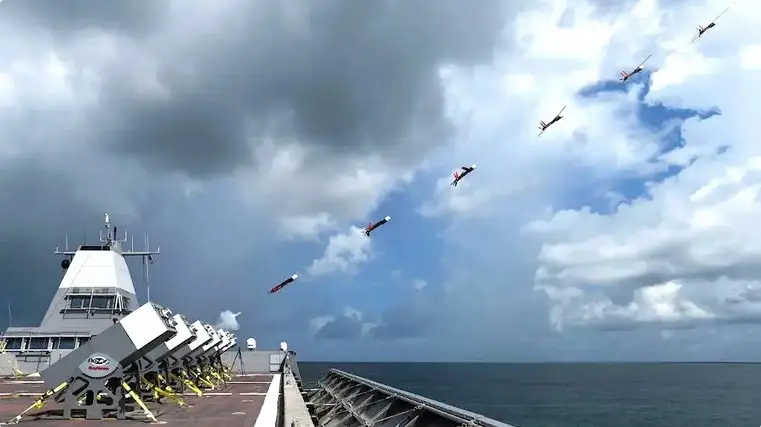
RTX's Coyote drone launched during testing
But this is clearly not all. A possible alternative to a box launcher would be to use the VLS cells themselves to launch drones. In general, theoretically this is quite feasible: the Mk 41 VLS cell is about 8 meters long, so 6-7 drones can easily be placed in length in their tubes, even taking into account the presence of some kind of separation gaskets. After all, missiles are packed in bundles, why are drones any worse? Well, only because they are more fragile.
Considering how missiles are inserted, drones can be stuffed in the same way, which means that four pipes and 20-24 drones can fit into one cell. If you use four cells out of 96 on the same Arleigh Burke Flight II, excuse me, that’s almost a hundred drones! Here's a swarm for you...

Mk 41 VLS cell configuration and armament. Lockheed Martin graphics
At the same time, this would take away valuable cells from much larger and more powerful weapons, and maintaining or replacing drones with such a design would be more problematic compared to a simple box launcher. Problems with one drone in a stack can also prevent others from launching. On the other hand, vertically packing small drones into a VLS cell is a very promising idea that would only require modification to the innermost cell/container and could be attractive to ships that already have VLS arrays installed. Drones can be added as needed, with the cell easily taking on a conventional missile payload.
A drone for all occasions
Again, drones can be used for strikes, surveillance, electronic attack and communications relay, as well as serving as decoys. And I am sure that the time is not far off when drones will become the best weapon against drones, since spending a missile that costs 10 times more to intercept a drone that costs $000 does not seem very logical. But they spend it today, so there is something to think about for tomorrow.
Separately about drone repeaters. A very useful thing, especially when there are no satellites to control the herd of drones from the ship. Such situations may, may happen.
The relay portion of communications is important because using one drone as an aerial relay means that other drones can communicate directly with the ship over long distances without the use of a more advanced aerial relay platform or satellite communications, which could become vulnerable to enemy attack.
Multiple relay drones in a chain can operate over long distances to maintain communications with drones and other systems located at significant distances from the ship. A network of relay drones can be very useful in coordinating anti-submarine searches, and there is another advantage, but it is only useful for NATO: the creation of an alternative communications network when the main systems are suppressed.
Why for NATO? Well, in general, everything is simple: Russia has Murmansk, which is capable of playing havoc with communications in the Atlantic, but NATO does not have such a nightmare.

In general, it seems that drones will soon gain such a high degree of autonomy that they will be able to choose their own targets under certain circumstances independently. Moreover, even without communication with the command center. Of course, this is a moral question, how effectively a UAV can distinguish a military target from a civilian one, but do modern cameras distinguish people from birds, for example?
If you add up these different capabilities, when some drones can engage in reconnaissance, others can destroy targets, others can provide communications, and others can jam enemy air defenses, one can imagine how potentially effective UAVs launched from ships can be. This is all without cooperative swarming. Once swarming becomes available, once drones are able to communicate and coordinate operations with each other with some autonomy and dynamically respond to their environment, we are talking about a whole new level of unmanned warfare that is surely coming soon.
In fact, the era of unmanned carriers is not so far away.
A surface combatant could field its own swarm of unmanned aerial vehicles, which would create a network in the air capable of searching wide areas of the ocean for things like enemy ships and submarines or downed aircraft crews. This information can then be transmitted back to the ship in real time, and from there the data can be sent anywhere, at the disposal of any services. If a hostile target was detected, the decision could then be made to attack it using a drone as part of a swarm, or by launching a weapon from a ship or other platform in the theater of operations. And again, drones will be able to “illuminate” the target and provide additional guidance on it with the same laser. Again - painless in terms of losses from enemy opposition.
And the swarm, the swarm is also inherently very stable! If several drones are lost, the swarm will automatically optimize to make the most of any drones still active. With a higher level of autonomy, a swarm can confuse, overwhelm and disrupt an enemy's decision cycle by overcoming its defenses in multiple ways before the enemy can fully react and overwhelm/destroy it.
A highly resilient swarm operating over a wide area will be critical to success in future naval combat.
Death by an ax or a thousand cuts?
A good question, because a UAV is not yet capable of picking up and delivering a warhead to a target, like an anti-ship missile. But this does not mean at all that UAVs are safe for large ships. Yes, they are unlikely to sink a ship or even damage it beyond repair if used in small quantities. However, let’s consider this scenario: damage to critical sensors (radar and communications antennas, for example), communications and engineering components of the ship. Not only will the equipment necessary in battle be disabled, but also part of the crew will be diverted to deal with the damage and consequences.
There is no need to focus too much on the targeted disabling of radar antennas - a ship without them will be blind and deaf, unable to move and control its weapons. The question is how to withdraw and what, nothing more.
Further, when used in large numbers, drones, whether swarming or not, can deplete a ship's defensive arsenal by attacking from multiple directions. Close-in weapon systems can quickly run out of ammunition and need to be reloaded, weakening the ship's last line of defense and thus making the ship more vulnerable.
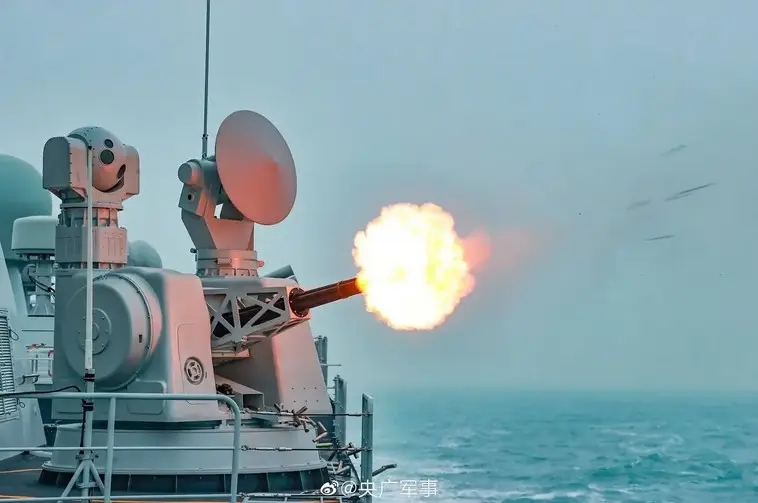
Even American and allied warships confronting Houthi drones have had to use close-in weapons systems to shoot them down. This is a fact that cannot be avoided.
In general, this is not a very pleasant prospect: UAVs, which already do not see radars very well, destroy the radar, leaving the ship practically defenseless against anti-ship missiles. And here we can already say that the ship will not have many chances to survive.
What emerges is a new format of naval combat: first, a cloud of drones is sent, which discharge the ship’s air defense to the maximum and disable its systems.

Now sending a flock of dozens of drones after a ship, from which you need to defend yourself, can become a reality, but defense is an impossible task, since the ship’s defensive system will be overloaded, and ammunition tends to run out. Given the number of drones that could be deployed, a ship might be able to easily defend itself against a limited number of drones, but attacking from multiple directions at the same time is a different matter entirely. story, especially since some of the drones can be used as electronic warfare platforms and decoys, which will further complicate the ship's defense.
One anti-ship missile costing $2 million could be neutralized by one anti-ship missile or even a decoy, but doing the same with 40 drones for the same total cost would be much more difficult, especially when they can be programmed specifically to attack in such a way as to exploit weak ones. places in the ship's defensive capabilities. Add to this the swarm component, where drones work together autonomously in real time, and defending against them only becomes more difficult. And not every ship has such a number of missiles in its launchers.
When an anti-ship swarm is used in combination with a layered attack, when the strike is carried out not only by UAVs, but also by cruise missiles and even ballistic missiles, it can become a serious problem not only for one of the enemy's most advanced warships, but also for an entire flotilla. In other words, drones can provide combat mass: a dynamic quantity problem that must be solved by the ballistic computers of the target ship, allowing more effective weapons to have even greater impact.
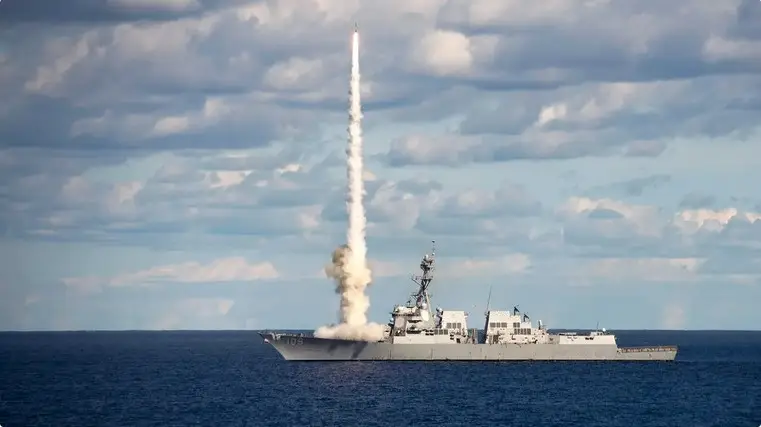
Arleigh Burke-class destroyer uses SAM
So yes, we are talking about a very problematic potential that has so far been chronically underestimated. Warships are much better equipped to fight advanced anti-ship cruise missiles than they are to fight swarms of relatively small drones.
Drone Defense with Drones
Yes! Moreover, not only from airborne ones! Working to counter attacks by small unmanned boats (UECs) loaded with explosives is also a key capability that the ship's aerial drone inventory can offer. They can patrol in close proximity to a ship for hours and quickly identify and engage any approaching enemy surface threat with pinpoint accuracy. Their management can be integrated into the Aegis combat system to best distribute their attacks based on the most pressing threats.
Some warships are equipped with AGM-114 Hellfire vertical launch missiles to combat small boats. But these missiles are much less flexible and have much shorter range than the drones we are discussing here. Again, the missile can only be used once the target has already been detected. The rocket cannot “hang and watch.”
But some of the UAVs can be equipped with millimeter-wave radar homing heads, similar to those used by Hellfire for this application, with real-time target assignment data linked to them. This way, drones even have some advantage over Hellfire.
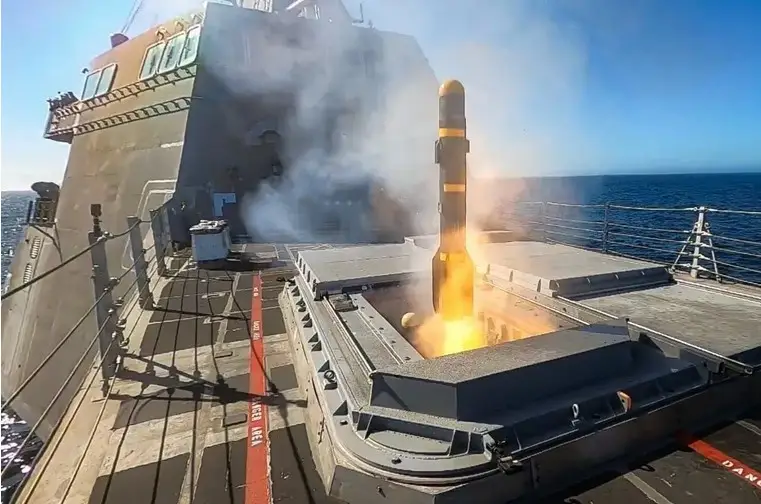
The AGM-114L Longbow Hellfire missile is launched from a surface-to-surface missile module on board the USS Montgomery (LCS-8) Independence variant
Finally, shipborne drones can work to defend against similar lower-class unmanned aerial vehicles by tracking them down and destroying them kinetically or through electronic attacks. As we said a long time ago, the best defense against drones, at least in some cases, is other drones. That is, the times when, instead of a helicopter patrol, a patrol of mixed UAVs will fly at a distance from the ship - they are already on the threshold.
Understanding what small surface and air threats exist beyond a ship's radar horizon is challenging. Sending drones to search for hours beyond that horizon would provide early warning of such threats in high-risk areas, and they could even eliminate threats before they pose a threat to the ship.
Well, you already understand what risky situations we are talking about.

Bottom line: Unmanned aerial vehicles can greatly help ships destroy enemy drones (both sea and airborne) at a much lower cost, without spending millions of dollars on interceptor missiles or allowing a drone to get so close to a ship that it would require the use of artillery systems.
Currently, there is a gap in the protection of ships, as clearly demonstrated by events in the Red and Black Seas. And this gap needs to be eliminated, and not by installing anachronisms such as additional machine guns with shooters and without radar guidance.
Yes, multimillion-dollar missiles are still critical to fighting aerial targets, but small unmanned aerial vehicles, and eventually the ability to deploy them in large cooperative swarms, will become as important in many ways as these multimillion-dollar missiles, whether the naval command likes it or not.
The question is who will solve this problem faster and what drones will they put into their vertical launch cells on warships.
* Based on reviews in American and European media: The Drive, The National Interest, The Telegraph, Die Welt.
Information